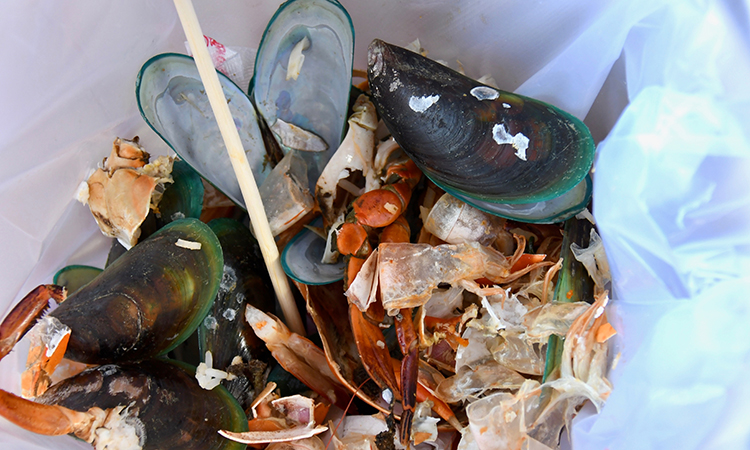How do we reduce seafood waste?
- Like
- Digg
- Del
- Tumblr
- VKontakte
- Buffer
- Love This
- Odnoklassniki
- Meneame
- Blogger
- Amazon
- Yahoo Mail
- Gmail
- AOL
- Newsvine
- HackerNews
- Evernote
- MySpace
- Mail.ru
- Viadeo
- Line
- Comments
- Yummly
- SMS
- Viber
- Telegram
- Subscribe
- Skype
- Facebook Messenger
- Kakao
- LiveJournal
- Yammer
- Edgar
- Fintel
- Mix
- Instapaper
- Copy Link
Posted: 10 February 2021 | Joshua Minchin (New Food) | No comments yet
Researchers from Arizona State University think a retail model used in Mexico could hold the key to reducing seafood waste and relieving pressure on our fisheries.


Throwing away seafood is even costlier than you might think according to Lekelia Jenkins
Nutritionists have been touting the health benefits of seafood for years. Some dietary guidelines recommend that the average adult gets at least two servings of seafood per week. But the push to increase our consumption of seafood can put a strain on the seafood industry and create more waste.
“Many fisheries are fully exploited or overexploited,” said Lekelia Jenkins, an associate professor at Arizona State University’s School for the Future of Innovation in Society in the College of Global Futures.
“We are pushing our fisheries to the brink that they can sustain. Meanwhile, consumers are wasting nearly half of the fish they buy. We need to understand our waste behaviours and put a mechanism into place so that we use what we catch.”
Jenkins is researching ways to improve sustainability in the seafood industry by conducting a case study on SmartFish, a group that works to improve the social and environmental future of artisanal fishing in Mexico by creating new markets for sustainable seafood and rewarding fishers for sustainable practices. Jenkins will present her findings at the American Association for the Advancement of Science (AAAS) annual meeting.
“We’re looking at how we can use market incentives to try to reduce waste,” said Jenkins. “While SmartFish doesn’t explicitly look at waste, we thought their approach might be a way to reduce waste.”
Research into the SmartFish model found it did reduce waste of the seafood itself, but it also introduced other points of waste that didn’t exist before, such as plastic packaging. Jenkins believes those points need to be addressed, but were small compared to how the model improved sustainability.
“The overall benefit of their model seemed markedly higher than the small points of introduced waste, but it’s something to be aware of so that it can be reduced, remediated and removed completely if possible,” said Jenkins.
Jenkins and her research team are also studying ways to replicate, scale and even improve the Smartfish model.
“We want to see if their approach can make waste more explicitly a priority, or if it can be scaled up and used in different geographies as a way to incorporate that aspect of it,” said Gabrielle Lout, a School for the Future of Innovation in Society doctoral student who has led the data collection.
“Waste is not easily defined; it occurs throughout the entire fisheries value chain. That makes it a complex challenge. But the Smartfish approach has good potential to shed light on how we can better incorporate waste as a sustainability priority.”
As the efforts to improve sustainability in the seafood industry continue, Jenkins wants people to understand the true cost of seafood; it’s more than just money.
“The fish you eat has so much embodied in it,” said Jenkins. “It may have only cost you a few dollars at the grocery store, but embedded in that cost is a life, fuel, carbon and water. So when we throw away the fish, we’re throwing out so much more. That waste comes with a real burden on our society and our environment. With really small changes, we can fix that.”
Related topics
Food Waste, Health & Nutrition, retail, Supermarket, Supply chain, Sustainability, The consumer
Related organisations
American Association for the Advancement of Science (AAAS), Arizona State University, SmartFish









